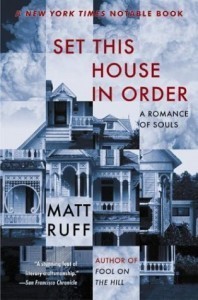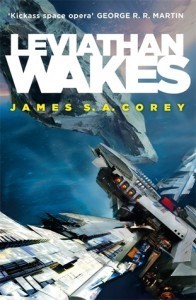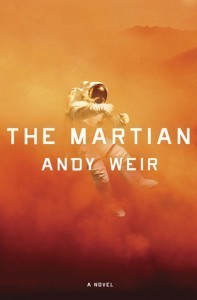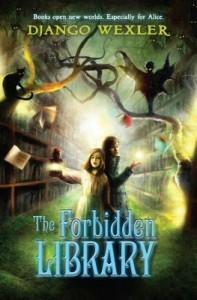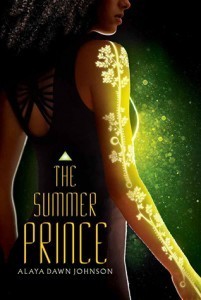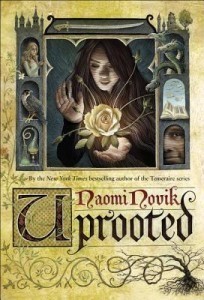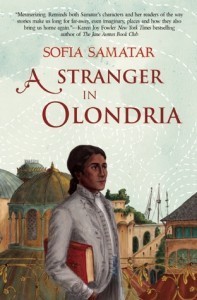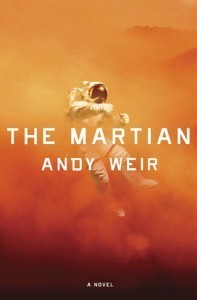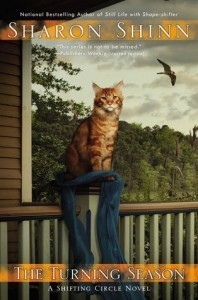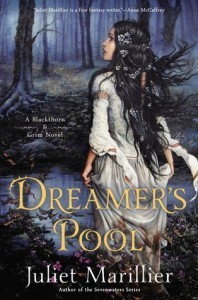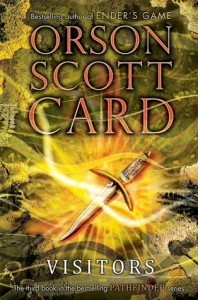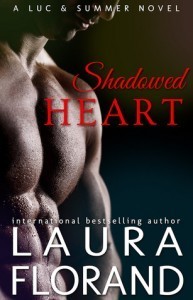Rachel Neumeier's Blog, page 357
November 15, 2014
For SF month — Sci-Fi Subgenres
Here’s part one of a nice, fairly thorough set of recommendations sorted out by subgenre, this one posted at the blog The Thousand Lives.
SF/Fantasy crossover — Steelheart is listed as an example. I really do need to listen to or read that one of these days (I have it in both paper and audio now).
Space Western — more examples are listed than just Firefly.
Post-apocalypse — I know, so many examples these days.
SF fairy tale retellings — that one is particularly interesting, but it does seem to be a slightly more common subgenre than I expected, especially if you include retellings of things that aren’t fairy tales, like For Darkness Shows the Stars
and Jenna Starbourne.
And here’s part two, from the blog Looking for the Panacea: SF subgenre recommendations. Included subgenres:
Space opera — defined by elements of romance, melodrama and adventure, set mainly or entirely in outer space
Steampunk — I really have not read very widely in this subgenre.
Time Travel — they don’t mention Blackout / All Clear, but that’s the one that springs to mind for me.
Dystopia — I KNOW, too many to even count, but I do like the inclusion of Fahrenheit 451 — always nice to include some of the older works rather than just the current huge list of YA titles.
Anyway, always interesting to read through someone else’s list of subgenres and recommendations.
Recent Reading: SET THIS HOUSE IN ORDER by Matt Ruff
So, is SET THIS HOUSE IN ORDER actually a science fiction novel? Or is it a contemporary fiction title, meant to illuminate the possible experience of a person with multiple personality syndrome?
I read the whole book without once thinking about that – I read it as SF/Fantasy. But now I’m not sure. Because, now that I come to look back on it, there are actually zero SFF elements in this story, even though the reading experience is very much an SFF experience. SET THIS HOUSE IN ORDER could be read as a character study folded into a suspense plot. The point is not really the suspense; the intent of the story seems to be to bring multiple personality syndrome to life for the reader, offering not one but two takes on the experience of coping with multiple personalities.
Is the picture presented to the reader “true” or “accurate”? I don’t really know, but I think it could be. I’m not a psychiatrist or psychologist, although I’ve read a good bit of nonfiction in the field because it’s interesting. It seems to me that the author has done quite a bit of research and tried to present an interpretation of multiple personality syndrome that is true to the actual condition. I like the way the condition is presented – as a functional, protective response to early-onset, severe, long-term childhood torture. I think that is the correct way to view multiple personality syndrome, which is why I don’t like to call it multiple personality disorder. It certainly can ultimately lead to dysfunction, but that’s not the same as, say, OCD or paranoid schizophrenia, which are conditions that are, as far as I know, strictly pathological and dysfunctional.
Andrew has his personalities (souls) fairly well in order, or at least it seems so at first. Penny doesn’t yet understand why she loses time or why notes mysteriously appear, reminding her that she’s starting a new job or that she has an appointment for lunch. I like all the characters, but I particularly love Penny. One of my very favorite details is how Penny disposes of her mother’s ashes, after her mother has a stroke and dies.
Anyway, through Andrew’s and Penny’s experiences, we are offered different ways of looking at multiple personality syndrome and different metaphors to understand the way the personalities appear and develop and function. Ruff also manages to make the different personalities distinct and show what important roles various personalities play, and what accommodations they can make with one another in order to create a functional life from a shattered childhood. This is all really well handled.
As an interesting touch, the most dysfunctional person in the story, Julie, does not have any diagnosed emotional or psychiatric problem. I mean, I don’t want to downplay what Penny goes through at first, but over the course of the story and particularly in the final chapter, which is really an epilogue, Penny becomes a quite functional person. Andrew had the job partly done to start with and had already made a decent life for himself at the time the story opens.
This is not true of Julie, who is a mad dreamer at the beginning and a mad dreamer at the end, the sort of person who leaps into wild plans, does not allow for obvious contingencies, loses everything, and leaps undeterred into the next wild plan, sowing chaos all around herself as she goes. Julie is impulsive, impractical, emotionally manipulative, and thoroughly self-centered. She is the sort of person who is always at the center of her own drama and wants everyone else to revolve around her, too. She is presented rather positively through Andrew’s eyes – he is her friend and at least imagines he might like to be more – but I must say, I thoroughly disliked her.
It didn’t occur to me till after I finished the book that it could hardly be accidental that Andrew and Penny are contrasted not only with each other, but with Julie. At the end, Julie is the one whose life is least in order. In fact, lots of the non-diagnosed characters are in fact coping with some peculiar psychological issues. Some cope extremely well (Mrs Winslow) and some very badly (Chief Bailey), but we sure do get a whole range of “normal” people who are not, on second thought, necessarily as normal as all that.
So, this is a fascinating story in all kinds of ways.
It’s also catchy. I read it fast, without wanting to put it down – I stayed up quite a bit later than I meant to and actually dreamed about it after I went to bed. (Really.)
I also want to mention that Ruff does an amazing job of making the childhood abuse suffered by both Andrew and Penny quite clear, without ever making the awful details too immediate or too vivid. Ruff handles all that childhood horror with such care that you can probably stand to read this even if you can’t bear child-torture scenes.
Whatever else it is, SET THIS HOUSE IN ORDER is a tribute to the ability of the human spirit to recover its integrity – for a broad definition of “integrity” – after the most appalling abuse. I will definitely be looking up other work by this author. In fact, I’m staying with my brother in Chicago and he just handed me FOOL ON THE HILL, so I won’t have to look very hard.
WindyCon: Fairy tales
So, I moderated my first panel yesterday! Knowing I was going to moderate made me do a lot of homework — ordinarily I’m a fly-by-the-seat-of-my-pants kind of panelist, probably not surprising since I’m also a figure-it-out-as-you-go-along writer. But this time I totally cheated by coming up with a long list of questions (and answers) before the panel, starting with “What are fairy tales anyway?” and reading Tolkien’s long essay on the subject (“On Fairy-Stories”) to extract possible answers.
The other panelists were Lou Anders, , A.Lee Martinez, F. Salvatini, J. Stockman, and T. Bogolub. Lee Martinez is the author guest of honor here at WindyCon, so there’s that. He was a funny guy and actually got me interested in looking up his most recent novel, Helen and Troy’s Epic Road Quest, which would not ordinarily really sound like my thing. It has a female teenage minotaur as one of the protagonists (Helen). And Lou Anders has his first book out, Frostborn, a MG which draws on Norse mythology and got a starred review from Publisher’s Weekly.
Anyway, back to the topic, Tolkien asserted that fairy stories are defined by “taking place in Fairie,” by a numinous sense of wonder, and by a sudden “turn” toward an ending that is not just happy, but joyous. I basically agree with these points, and you can sure see the “joyous ending” in Tolkien’s own Lord of the Rings, though then he went on to a more bittersweet ending at the very end, of course.
Anyway, all the panelists basically agreed about the magic of a fairy tale being different from the more codified types of magic of much of the rest of secondary world fantasy. The rules are those of Fairie, there are no explanations for the magic, there just *is* an enchanted forest and things just *are* magic.
Incidentally, I think there are four categories of fairy tales — I’m not sure this came out in the panel, so I’ll share it with you all here:
a) traditional fairy tales; eg The Tales of the Brothers Grimm
b) close retellings; eg Beauty by Robin McKinley or The Goose Girl by Shannon Hale
c) lose retellings; eg Cruel Beauty by Rosamund Hodge or Cinder by Marissa Meyer
d) stories that are not based on traditional fairy tales at all, but are fairy tales because of their use of magic and their tone. Examples would include The Changeling Sea by McKillip, The Shapechanger’s Wife by Sharon Shinn, or The City in the Lake by me.
There are also stories that draw very lightly on the fairy tale tradition without really being fairy tales, like Laura Florand’s The Chocolate Rose, though I didn’t really think of that till this minute.
Anyway, it was a good panel; luckily the audience helped absorb the full ninety minutes, which was a long time. I was surprised that no one mentioned Patricia McKillip until I dragged her forcibly into the discussion. Her Song for the Basilisk strikes me as especially suitable for a discussion about fairy tales, because first the whole story is a fairy tale and second when the protagonist goes to the hinterlands, he is stepping into Fairie, so that particular story is layered with different layers of Fairie.
Today’s panel is on writing disabled characters, and thanks to you all I have lots to say about the topic, so I’ll let you know how it goes later.
November 14, 2014
The SF Flowchart
If I knew how to create flowcharts, I’d try to do one of my own. But I don’t have to figure it out, because there’s this one at Snowflakes and Spider Silk, posted for SF Month.
So, click through and then tell me what you’d add if you were making a flowchart. I’ll tell you what I think is missing: hard SF! Now, you might define hard SF as science-heavy characterization-light SF, but I’m not sure. I’ve seen hard SF defined as the equivalent of epic fantasy, and I think I might agree. Because I’d say that Leviathan’s Wake by James SA Corey is hard SF, and is science-heavy, but definitely not light on characterization.
Now, Leviathan Wakes is not entirely my cup of tea and I haven’t actually gone on with the sequels, but space, big ideas, broad scope, multiple points of view, important changes to the world(s)and society — don’t you think it is really very much like epic fantasy?
I know the categorization of subgenres can extend infinitely. What else might you add to this flowchart?
Airport reading: HOMEBODY by Orson Scott Card
This is one of two books I picked up in the dealer’s room at the WFC. I got it because it was offered for a sale price and because I’d never heard of it and thought it was the sort of story Orson Scott Card would tell very well: a contemporary ghost story with a small scale, even intimate, setting. Then I couldn’t get it into my carry-on bag or handbag and wound up carrying it in my hand, so naturally I read it on the way back despite all the titles stacking up on my Kindle because, I mean, there it was.
Okay, on the one hand, HOMEBODY was indeed a really good story and I definitely enjoyed reading it. I was right that it was a story that Card would handle well. He’s a very skilled writer and can definitely put sentences and paragraphs together beautifully. The protagonist, Don Lark, is beautifully drawn – naturally, because this is another thing that Card does very well. Don used to build homes for people, but then tragedy struck – he lost his ex-wife, which he could have dealt with, but he also lost his little daughter and that just about destroyed him. Now he buys old houses that need work, fixes them up, sells them, and moves on. He has no interest in settling down or creating a new family.
Then he buys this particular old house . . .
As I said, this is a ghost story. It’s got some unexpected details, in fact it has a lot of unexpected details. It’s not horror, by the way, it’s not that kind of ghost story. It’s kind of a romance, but there’s more going on than just that.
But.
This is a book I enjoyed all the way through, I really did. But for the second half, I was like, “What was Card thinking? What was his editor thinking? Doesn’t he have beta readers who can read analytically?” Because structurally, this story just does not hang together, and Card’s such a pro, it’s hard to see how he could let that happen.
The problem is with a semi-important secondary character and with everything connected with that character. Cindy is the real estate agent who sells Don the house. At the beginning and all through the first, oh, third or even half of the book, we get scenes from Cindy’s pov. She’s a fun character to start with, and then we find out some intense stuff about her background, and Don almost begins a romance with her but then they become friends instead, and he defends her against a smarmy coworker at some cost to himself – which is a bit odd right there, as the Cindy we first meet seems well able to defend herself, but okay.
Then Cindy vanishes from the story. Vanishes completely. We never see her again; as far as I recall Don never even thinks of her again. The smarmy coworker? Vanishes. The legal issue that seems like it might become an important plot point? Nope, it comes up briefly, is resolved even more briefly, and disappears for good.
This is so strange. It’s like Card meant to write another whole plotline, then changed his mind and took out the back half of Cindy’s plotline, but failed to notice that the whole front end of it was still there. There is nothing *wrong* with the Cindy plot elements, she’s an engaging and interesting character, but with a Cindy-heavy front half and a Cindy-free back half, the story as a whole is left seriously unbalanced. I would never have expected Orson Scott Card, who has handled lots of far more complicated plots, to write such an unbalanced story and, apparently, not notice.
November 13, 2014
Which Star Trek species are you?
I like internet quizzes, so I thought I’d point this one out. It was posted at Oh The Books a couple of days ago.
I am, of course, a Vulcan. You can just see the ??? appearing over my head when I’m talking to a histrionic, impulsive, emotion-driven person in real life — I’m like, Why do you wind yourself up like this? And that kind of character drives me nuts in fiction.
Anyway, if you take the quiz, how about you?
Recent Reading: THE MARTIAN by Andy Weir
Okay, so, since I’ve been wanting to read more SF anyway, Science Fiction Month seemed like the way to go! So I actually signed up as a participant. That’ll make me post regularly on SF topics for sure. Let me remind you all that SF month is being managed by Rinn at Rinn Reads and by Kelley, Asti, and Leanne at Oh The Books. You should definitely click over to both those sites if you have time. And the master schedule for the month is here.
So, listen, about THE MARTIAN. If you’re going to be stuck in an airport and then on a plane for hours, then you, like me, may find this one a good choice. Because oh yes, it sure is a pageturner and no mistake. I’m glad Rinn Reads put this one on my radar, and also that Linda gave it a thumb’s up in the comments here a few days ago, because Linda was right — this book might not really be for everyone, but I loved it.
It’s kinda a different story, like so:
Character development: there is no character development. The protagonist, Mark Watney, is in fact well drawn and highly believable, which is crucial, because he is the only person on stage for a large part of the story and has to carry the whole plot almost entirely by himself. And, just as important as believability, he’s a very likeable protagonist that the reader can definitely enjoy spending time with. But actual character development? Not actually, no. Mark is an intelligent, competent, kind, good-humored, emotionally stable guy at the beginning and an intelligent, competent, kind, good-humored, emotionally stable guy at the end. That is why he can cope with grinding loneliness and isolation, boredom, chronic stress, and many, many moments of utter disaster.
Other characters: also drawn well and believably, but none of them change significantly over the course of the story either, partly because they are very secondary characters and simply don’t get enough screen time and partly because character development is not the point of the story. Okay, wait, I will admit that one (1) character does become more assertive as the story progresses, but *basically*, character development is just not a thing in this book.
Romance: hah hah hah. No. After all, Mark is all by himself for the entire story, so he’s plainly not going to be involved in a romance. Plus, he wasn’t seriously involved with anybody before he got stranded, so the angst quotient is low on that account, too. Weeeellll, okay, fine, there is a *tiny* bit of romance between two of the secondary characters, but seriously, it is pretty much a blink-and-you’ll-miss-it plot element.
Overall plot: utterly simple and predictable. Mark gets left for dead on Mars without sufficient resources to survive and then figures out how to survive anyway, meeting one crisis after another until he is finally rescued. Given the basic shape of the plot, it’s basically clear that Mark himself and everyone else involved in the rescue will surmount all difficulties.
Technological details: many many many technological details about the “Hab” and the equipment and techniques that Mark uses to keep it habitable and make the oxygen and water and so on that he needs to survive. Many details about Mark building stuff and stuff breaking disastrously and Mark fixing stuff, or finding ways to survive when the stuff can’t be fixed. The author did lots of research to make all this as true to the science as possible, and does it ever show, let me tell you. But don’t let that put you off! This is all actually interesting and even compelling, even to me, and I’m not a tech geek by any means.
Tension and conflict: Oh, yeah. In spades. Mark is the hero, Mars is the antagonist, and the story is a real page-turner. Despite all the stripped out elements the reader (or at least I) am used to depending on to catch and hold my interest – character development and interactions and all that – this is a fascinating, compelling read.
I would say that the following people might be a good bet to enjoy THE MARTIAN:
Readers who are into tech and/or space and/or adventure stories.
Readers who used to enjoy watching the MacGyverTV show.
People who ordinarily read nonfiction.
People who liked Merrie Haskell’s CASTLE BEHIND THORNS – remember how Sand was the only character on stage for a third of that story? This reminded me of that. I know that is a MG story and THE MARTIAN is meant for adults, but still. If you have a teenager around who is into tech / space / nonfiction / adventure, then this might be just the ticket.
People who enjoyed Kim Stanley Robinson’s Mars trilogy, but might like something simpler, faster, a lot more fun, and without Maya’s histrionic temperament, not to cast stones.
November 12, 2014
Titles and Authors that have suddenly appeared on my radar –
You probably know that a lot of publishers, and also a lot of self-published authors, have bookmarks and cards made to advertise their books. They put their book cover on the front and a sentence or quote about the book on the back. Sometimes a publisher will make up a little booklet with the first chapter, or sometimes an author will include a link where you can go to download a free chapter or even the whole book. These materials are spread out over a couple tables at the World Fantasy Convention, not to mentioned handed out liberally during face-to-face chats.
Also, of course everybody on panels, and for that matter everybody you meet, recommends books and authors. If they sound like they might be good, of course you scribble the names down on a bit of paper or (these days) email yourself a reminder.
Not only that, but publishers also distribute copies of free books to the convention and the (extremely hardworking) WFC staff put selections of books in large tote bags and hand them out when you register. Attendees spend the whole weekend sorting through these books and discarding the ones they already have or the ones they have no interest in, while picking up books that they don’t have and think they might like.
So because of all this, I’ve got a whole lot of new titles and authors on my radar now. Like these:
Django Wexler – The Forbidden Library. I met Django Wexler and so I can now tell you that The Thousand Names is the first book of a longer series, five books if I remember correctly. He’s trying to keep them all self-contained, btw, but there will definitely be more than three. But I hadn’t realized he’d previously written this MG title, The Forbidden Library.
So, yeah, now I need to look that up. I mean, they had copies in the dealer’s room, but it was hard enough getting the best things from the free book bag crammed into my single carry-on bag, so I wasn’t interested in actually picking up much from the dealers.
DB Jackson – The Thieftaker – “…a colonial America that is at once familiar and unlike any version of history or fiction that you’ve seen before.” I’m sure I’ve heard of this book before, but I don’t remember anything about it. Time to look at Goodreads reviews!
Alaya Dawn Johnson – https://www.goodreads.com/book/show/1... – “A heart-stopping story of love, death, technology, and art set in a soaring glass city off the coast of a futuristic Brazil.” I like this “soaring glass city” thing. And I might like a futuristic Brazil. And the cover is nice:
Sarah Beth Durst – The Lost – “It was supposed to be a small escape. A few hours driving before turning around and heading home. But once you arrive in Lost . . . well, it’s a place you really can’t leave.” It sounds like it might be edging on horror from that description. And the cover does nothing for me. But I liked Vessel quite a bit, more than well enough to be interested in this book.
J Kathleen Cheney – The Golden City – “. . . part fantasy, part romance, part police procedural, and part love letter to [Portugal] in the early 1900s.” (Kirkus) There was a card for this one, but in fact it was independently recommended to me by Sharon Shinn, so that definitely piqued my interest.
Suzanne Church — I had a nice chat with Suzanne and her husband and picked up her card. Dropping in at her website, I see that her short story collection got a starred review from Publisher’s Weekly. Also, she cleverly included extra background material about each story on her website. That’s an excellent idea. I should do something like that.
Other books that were recommended to me so that I emailed myself a quick note containing the title included Grave Witch by Kalayna Price, The Rosie Project by Graeme Simsion, an Life After Life by Kate Atkinson.
Courtney Schafer – The Tainted City (sequel to The Whitefire Crossing). I didn’t passionately love the first book, but I liked it. And the main character is certainly in a pickle at the end of the first book; I want to see him get out of it. And Kristen at Fantasy Book Café loved the sequel, so there’s that. I’d have picked up a copy of The Tainted City at the convention but I just didn’t have room in my bag. Besides, I’d rather have Book 2 in e-format, to match the first book.
Genevieve Valentine – Persona – “You are cordially invited to meet Suyana Sapaki. If she lives that long.” Catchy hook, isn’t it? This is a book coming out early next year from Saga Press, and it looks like it might be good.
L Jagi Lamplighter — The Unexpected Enlightenment of Rachel Griffin. I listened to a brief reading from this and I thought it sounded promising.
Then I’m not sure about these next ones – I have cards about them to allow WFC attendees to download partial or full books. All of these look interesting enough to at least check into:
Lawrence M Schoen – Calendrical Regression
Kater Cheek – Mulberry Wands
Sally Wiener Grotta – The Winter Boy
CR Fladmark – The Gatekeeper’s Son
Then, you know, panelists recommend stuff, and these were recommended as excellent narrative nonfiction:
John Keegan – The Face of Battle
Roger Crowley – 1453
And, finally, Del Rey put out a pamphlet containing the first chapter of Uprooted, Naomi Novik’s new YA. I read a few pages, but frankly it looked too good to go on with. I want the real thing in my hands before I keep going with it. It’s due out June 2015.
November 10, 2014
World Fantasy
Okay, first! Congrats to Sofia Samatar, who won the World Fantasy Award:
I am so bad; I still haven’t read it, or indeed any of the other nominees except Marie Brennan’s A NATURAL HISTORY OF DRAGONS. I went to a panel where Sofia and others discussed language in fantasy; it was a good panel and did leave me with a desire to read STRANGER. Eventually I’m sure I will. My personal feeling on language in fantasy, btw, is that you can sure spend ALL YOUR TIME worldbuilding if you wish, but every hour you spend designing a beautiful language with a complete syntax is an hour you’re not writing. Which is fine! As long as your hobby is worldbuilding rather than writing. Apparently Sofia speaks two languages fluently and three others enough to get by. Wow.
The panel did emphasize that the most important thing is to get the names to all sound like they came from the same language (unless you set up the world with multiple languages, obviously). The way I do this, in case you wonder, is to emphasize certain letters and remove other letters; or to base all the words on terms from my handle book on Malaysian mammals; or whatever.
I signed up late, so I wasn’t assigned to any particular panel up front. However, I went and inquired of the very busy con staff and wound up participating in a panel on ecology in fantasy. This was a fun topic, especially with its emphasis on fantasy rather than SF! The other panelists were James Morrow, Julie Czerneda, and Geoff Hart. Julie and I have such similar backgrounds, it’s funny! I definitely need to try some of her SF. Anyway, we discussed how getting background details right (wheat in warmer areas, barley and buckwheat in cold areas) can make the fantasy world feel like it has more depth and more reality. But I think we all agreed that the story takes priority over scientific plausibility in books such as Naomi Novik’s TEMARAIRE series (you can’t possibly raise enough cows to feed the dragons in Britain, and as for raising elephants in Africa, forget it!). Later I went to a panel on dragons and Naomi Novik said the same thing when the question came up there.
The most interesting comment was made by a gentleman in the audience, I think possibly Fred Lerner himself (one of the editors of the SILVERLOCK COMPANION), about how different novels can be that are all called “fantasy” — ie, SILVERLOCK vs TEMERAIRE vs whatever. I agreed quite vehemently — it would be ridiculous to expect a book like SILVERLOCK, founded on literary allusions, to have the same kind of ecological foundation as a more standard fantasy. Here’s where you really have to agree to treat fantasy as a marketing category rather than a real category that has anything to do with what the book is *like,* because there’s just no comparison.
Okay, let’s see. I did attend various other panels — this and that — I thought all of them were well moderated and the panelists all did a good job. I took notes on how best to moderate panels because I’m supposed to moderate one on fairy tales this coming weekend.
I went to various readings — Sharon Shinn’s (she read from her first TURNING SEASON) and Mary Robinette Kowal’s (she read from a new standalone that has to do with mediums getting reports from the front from soldiers who have just died; that’s certainly a different concept for her!) and actually quite a few others. Oh, I thought L. Jagi Lamplighter’s reading from a new book of hers was good. I’m afraid I didn’t get the title of the book, but on the other hand who cares? I’ll just try any title of hers that looks intriguing. I took lots of notes on authors and books, but I don’t have them with me, sorry. I can see my TBR pile is going to expand, though.
I did meet my agent — only the second time Caitlin and I have met in person — and my new Saga editor, Navah. Caitlin and I got to talk about my current projects and, you know, tactical issues about how to handle things. Navah is enthusiastic and energetic and should be a great choice to help make Saga a successful imprint. I got to meet various other saga authors and staff, too, and I must say, the dinner conversation on Thursday was . . . unique. It involved frog, uh, reproduction. Because one of the other Saga authors was involved in some kind of captive breeding program, see. Anyway, Saga’s doing a great job of presenting its upcoming releases. Check this out, for example.
The hotel was totally beautiful and wonderful, btw. It was the Marriott Residence Inn Arlington Capital View Hotel, in case you’re interested. Full kitchen (including a card you could fill out to cause groceries to appear). Full sized fridge, cooktop, dishwasher, everything. Totally wasted on me, alas. They actually had a rooftop garden above the the fourth floor so that the view of the roof was quite attractive. That’s certainly attending to details! Wonderful staff. Too bad I didn’t spend all that much time in the hotel, because it sure was great.
Anyway, yeah, a good convention all around, and even the airports on either end were pretty easy to navigate. Biggest problem: cramming books into my carry-on bag. I got them all in, barely!
November 5, 2014
Books I’m looking forward to –
Okay, first?
I’m going to the World Fantasy Convention this weekend, which means I’m leaving tomorrow and not getting back home till Sunday evening. And I’m probably not going to take my computer with me, because I prefer to carry as little as possible with me on the plane and I’m not facing any tight deadlines. Besides, I hope I will be superbusy all weekend doing fun stuff. So: I will see you all on Monday. Have a nice weekend!
But!
I enjoy flying, I always ask for a window seat, I love looking out at the landscape, but all that time sitting in airports, ugh. I definitely will need a great page turner for the airport and the flight. So, yes, I just picked up THE MARTIAN.
The more exciting and the worse the nailbiting tension, the better. It has to contend with both the boredom of waiting and the distractions that abound when you’re in a crowded place. If I get so absorbed in the story that I miss my flight, I’ll blame Linda, because it was her comment that made me decide to buy it now for this purpose rather than just toss it on my very extensive wishlist.
But I won’t have any of the titles below, because they’re not quiiiite out yet:
I’m looking forward to Shinn’s THE TURNING SEASON, though definitely not as much as I’m looking forward to the next book in the TROUBLED WATERS series. I hear the third book of the latter is finished, btw, but I have no idea when it’s due out. Amazon doesn’t know about it at all yet, I see. Anyway, the whole emotionally overwrought tone of the Shifter series means it will never appeal to me as much as some of Shinn’s other work. But I liked both the first and second books and I’m ready for the third. It comes out in a couple of days, I think. I need it in paper to match the other ones in the series.
Also, this:
I’ve been a Marillier fan since I read the Swan Princess one, DAUGHTER OF THE FOREST, and the two immediate sequels. Not every Marillier book works for me, but I’m willing to start a new series by her. This one sounds like it may hit certain tropes that appeal to me. It also sounds fairy-tale-ish, but not like a direct retelling. Here’s a bit of the back cover copy:
In exchange for help escaping her long and wrongful imprisonment, embittered magical healer Blackthorn has vowed to set aside her bid for vengeance against the man who destroyed all that she once held dear. Followed by a former prison mate, a silent hulk of a man named Grim, she travels north to Dalriada. There she’ll live on the fringe of a mysterious forest, duty bound for seven years to assist anyone who asks for her help.
I’m not exactly running short of things to read, but that sounds good.
I also see this one is coming out:
This is the third book of the PATHFINDER series. I really liked the first book, I haven’t read the second, and I’m a bit nervous about it because a few days ago Kim commented that she was horribly disappointed in the second book. So I feel like I had better read the second before I even think about the third. I would be really annoyed — worse than just annoyed — if I spent money on the third book and then turned out to hate the direction Card takes the series.
For Card, that’s a particular worry, too, because I don’t think I’m alone in thinking that ENDER’S GAME was fantastic, SPEAKER iffy, and XENOCIDE terribly disappointing. It’s not unimaginable that he would handle another series in a way that would lead me to have the same reaction. So we’ll see.
Okay, one more, although it’s not out till December:
Ooh, a new Laura Florand romance! It’s a longish novella at about 200 pp. Despite The Torso, a cover look that has negative appeal for me, I am really looking forward to it. It features returning protagonists: Luc and Summer. I can’t wait.
What else is coming out in the next month or so that is especially interesting or exciting?

